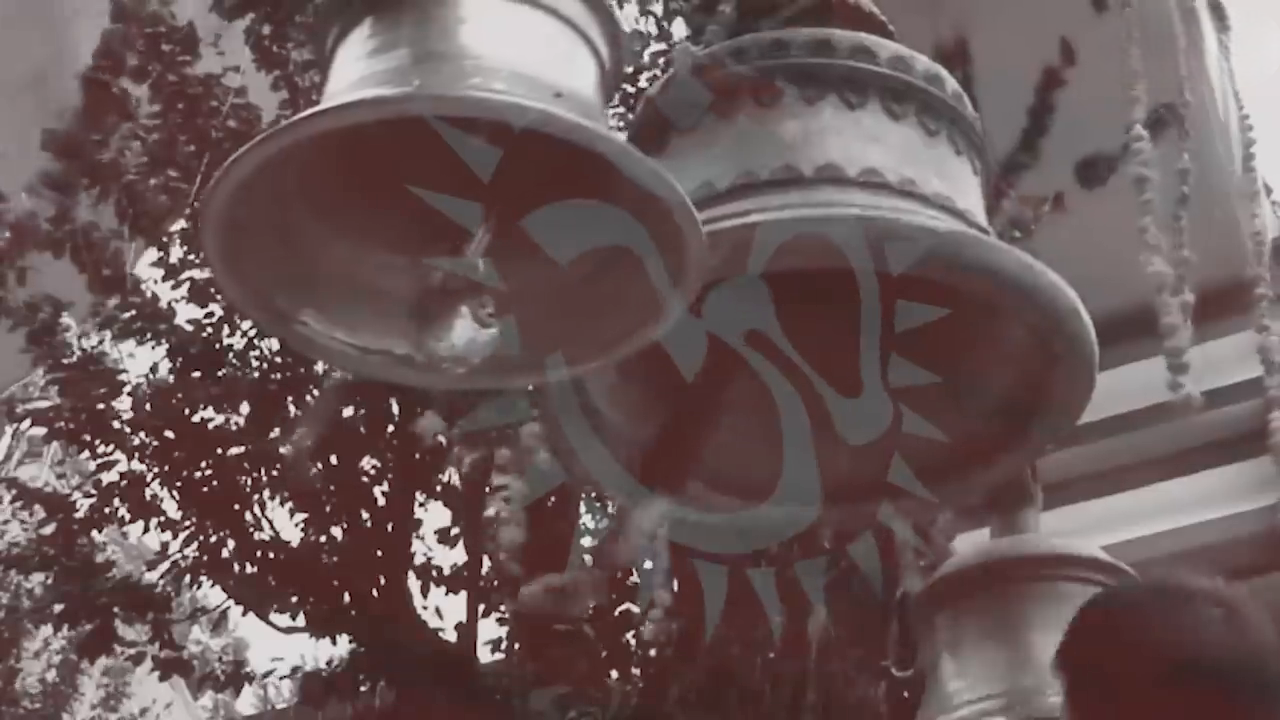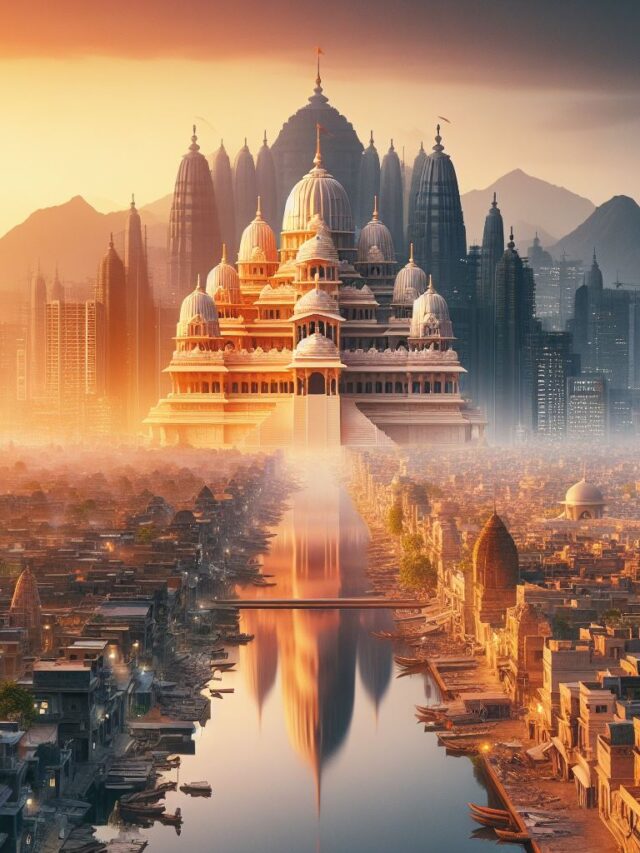
Glory to Shri Ram. The auspicious day is nearing when the divine temple of Lord Shri Ram will be consecrated on the holy land of Ayodhya, 500 Year Struggle Comes to Fruition. A day that was awaited for centuries with unwavering devotion and anticipation.
“This is not just the establishment of a temple, but the manifestation of a long journey of faith and devotion.”
The Story of A Historic Struggle
From the 16th century until today, the dream of devotees to see a grand Ram Temple built in Ayodhya remarkably illustrates the power of unwavering faith and determination. The imagination of the 16th century devotees, who dreamt of a magnificent Ram Temple in Ayodhya, the legal battles fought by warriors in the 18th century, and the intense penance by Ram devotees in the 20th century—all make for an epic tale etched in the annals of history.
This has been a struggle, not just between temples and mosques, but a fight for their devotion. A fight that lays bare the heart wrenching pain of those who spent decades of their lives just moving through the courts, with the hope that they would be able to visit the very temple that the barbaric Babur demolished in 1528.
The Beginning of the Legal Battle
It is important to know this history because we often forget how long and painful has been this fight for truth and justice. From Mahant Raghubar Das filing the first petition in a court in 1855, to the Supreme Court delivering its decisive verdict in 2019 – it has been an endless struggle spanning 164 years.
History bears witness that where the Ram Temple is being built today in Ayodhya, Shri Ram’s son Kush had once built a temple for him. Allegedly, there used to be around 3000 temples of Sitaram in Ayodhya alone. It is said that in the 5th century Hijri Era, many of these temples had begun to deteriorate. Around the same time, Raja Vikramaditya from Ujjain travelled to Ayodhya and renovated several of the temples here, restoring them to their past glory.
Over the next few centuries, these temples continued to stand. Then on April 21, 1526, a battle takes place between Babur and Ibrahim Lodhi. By 1528, Babur???s army had reached Ayodhya, and as per accounts, on his instructions his army general Mir Baqi demolished the temple and constructed a mosque in its place – which later came to be known as the Babri Mosque.
Then 150 years pass without much upheaval. This was a period when the roots of Mughal rule in India had grown very strong. But in 1717 AD ??? around 190 years after the Babri Masjid was built – Raja Jai Singh II of Jaipur attempts to acquire ownership of the masjid and the surrounding land. He was fully aware what that land meant for the Hindus and their faith. Although Jai Singh???s relations with the Mughal rulers at that time were amiable, he was unable to achieve his objective. But he did end up building a Ram Chabutra near the masjid so that Hindus could at least offer their prayers there.
The European geographer, Joseph Tiefenthaler himself visited Ayodhya between 1766-1771. In his accounts, he testifies to the existence of the Ram Chabutra at that site. So while during that period Muslims offered namaz inside the masjid, Hindus offered prayers at the Ram Chabutra outside. However even after 150 years since the temple demolition, Hindus had not forgotten that a temple commemorating the birthplace of Bhagwan Ram had been demolished and a mosque built over it.
Although there were thousands of Ram temples scattered across Ayodhya, what pained the Hindus was how a mosque came to replace the temple at Ram Janmabhoomi.
Around 1813 AD, Hindu organizations made their first official claim stating that Babur had demolished the Ram Temple in 1528 AD and built a mosque in its place. Reports from British officials in Faizabad are also said to have mentioned about remnants of Hindu temple-like carvings found within the mosque. Former IPS officer Kishore Kunal has also written about this incident in his book “Ayodhya Revisited”.
Following this, in 1838, British surveyor Montgomery Martin submitted a report stating that the pillars of the mosque has been taken from a Hindu Temple. There was much uproar after the report became public. With the Hindu claims out in the open, both namaz and puja started taking place at the disputed site.
In 1853 AD during the time of Nawab Baji Rao of Awadh, the first recorded communal riots in Ayodhya took place. But both Hindus and Muslims continued offering prayers at the same spot until 1855 AD. After 1855 AD however, Muslims were given permission to offer namaz inside the Masjid, while Hindus could no longer go in. They began worshipping at a Ram Chabutra built about 150 feet from the mosque’s main dome .
Following this, around 1850 AD ??? 138 years ago – Mahant Raghubar Das of the Nirmohi Akhada files a petition seeking permission to construct a canopy at the Ram Chabutra. It was rejected by the court. However this one incident reveals how long the Nirmohi Akhada has been fighting for the Ram Janmabhoomi issue.
After this Ayodhya was gripped with communal riots again in 1934 AD, during which one of the walls of the Babri Masjid was damaged. It was repaired again later but namaz was stopped at the spot. As you can see, this was an era when India was under British rule. The Indian National Congress too did not have Ram Mandir on its agenda, and neither did the RSS wield much influence at that time.
However, common Ram devotees, grieved by the demolition of the Ram Mandir 400 years ago by Babur, were still carrying on their fight for rights every single day. Mind you, this was at a time when India did not have its own independent government, media was not free, and religious organizations were not united. It was only and only the passion, devotion and determination of Ram devotees who were willing to lay down their lives for the cause of their beloved Ram Lalla???s temple.
In 1949 AD however, something happens that startles many people. On the morning of December 23rd, sounds of bells starts emanating from within the disputed structure. It turns out a Ram Lalla idol has been placed inside and Hindu rituals are underway. While the Hindu side claims that the idol manifested on its own during the night, the Muslim side alleges it was forcibly placed inside under the cover of darkness.
As the news spread, large number of people from both communities start gathering there. The situation escalates to the point that the matter reaches Prime Minister Pandit Jawaharlal Nehru. He instructs the Faizabad District Magistrate K.K. Nair to remove the idol and restore status quo. But K.K Nair refuses to comply fearing violence.
It is said that on December 27, Nehru sends Nair a second letter asking him to do the needful. This time K.K. Nair tenders his resignation while also advising Nehru against removing the idol to avoid communal clashes. Instead he suggests placing railings at the place where the idol has been installed. Nehru apparently likes the idea and not only asks Nair to implement it but also refuses to accept his resignation.
After this in 1950, Hindu Mahasabha lawyer Gopal Visharad files a petition in the Faizabad District Court seeking permission to allow worship of the Ram Lalla idol. Then for the next 35 years, the Hindu side and the Sunni Waqf Board continue staking claim over the site through legal petitions and affidavits. But nothing much happens.
Then comes the year 1980. With the advent of the BJP on the political center stage, things begin to change with regards to the temple movement. The RSS, VHP and BJP – all start ratcheting up support for the cause in their own ways.
In 1989, in an event at the Vigyan Bhawan in New Delhi, these organizations even draw up plans to organize a Rath Yatra from Sitamarhi to Ayodhya to gather support for the Ram Temple movement. But the event is cancelled after the assassination of Prime Minister Indira Gandhi.
Then in 1986, and event takes place that completely alters the course of the temple movement. You may remember how in the Shah Bano case, the Supreme Court directs her husband to provide maintenance money after divorce. This angers many Muslim clergy and leaders who see it as interference in their religious affairs.
To placate them, the Rajiv Gandhi government passes a law to overturn the SC verdict. Now Hindu outfits slam Rajiv Gandhi for Muslim appeasement. So on February 6th 1986, Rajiv Gandhi opens the locks of the Babri Masjid to allow Hindu rituals to take place inside, hoping this will makes Hindu groups happy.
But now its the Muslims who get offended with even namaz halted at the disputed site. On February 6th itself top Muslim leaders gather and form the Babri Masjid Action Committee to launch protests.
While I won’t get into everything that transpired over the next few years, let me give a quick recap for those viewers who may not know about the major events.
In the 1990s, L. K Advani carried out a 10,000-kilometer-long Rath Yatra from Somnath to Ayodhya to drum up support for the temple movement. He was arrested in Samastipur, Bihar, during the journey.
On the date when Advani’s Rath Yatra was to culminate in Ayodhya in 1990, a very large crowd of kar sevaks managed to reach the disputed site and climb atop the structure to hoist saffron flags. In order to control the crowd, Mulayam Singh Yadav’s government ordered firing on karsevaks leading to several deaths.
For about 7 years after this the issue remained subdued in courts. Then came another turning point on December 6th 1992.
Nearly 2 lakh kar sevaks gathered in Ayodhya. UP Chief Minister Kalyan Singh had assured the court that the structure will be protected. However at 1:55 pm the first dome of the structure was brought down. Within 3 hours by around 3:30 pm the other two domes had been razed as well.
Within 90 minutes of the demolition, President’s rule was imposed in UP. Kalyan Singh resigned. In the Hindu Muslim riots that followed nearly 1000 people lost their lives across UP and in Mumbai around 900 people were killed.
Then in 2003, 7 years after the disputed structure was demolished, the Archeological Survey of India was asked to conduct excavations at the site to ascertain what existed at the place before Babri Masjid. In its report, the ASI clearly confirmed that remnants found during excavation indicate that a Hindu temple existed on the site before the mosque.
For the first time this scientific evidence corroborated that a temple did indeed exist at the site previously. Citing this report, in 2010 the Allahabad High Court divided the title of the disputed land into 3 equal parts amongst the Sunni Waqf Board, Ram Lalla Virajman, and the Nirmohi Akhara.
But all three parties challenged this verdict in Supreme Court. From 2011 to 2019 the case drags on in SC with no outcome. In 2019, the SC finally wraps up hearings of all parties involved and on Nov 9th 2019 delivers the landmark judgment handing over the entire disputed land to the Ram Janmabhoomi Nyas paving the way for construction of a grand temple for Lord Ram at his birthplace in Ayodhya.
Jai Shri Ram!

